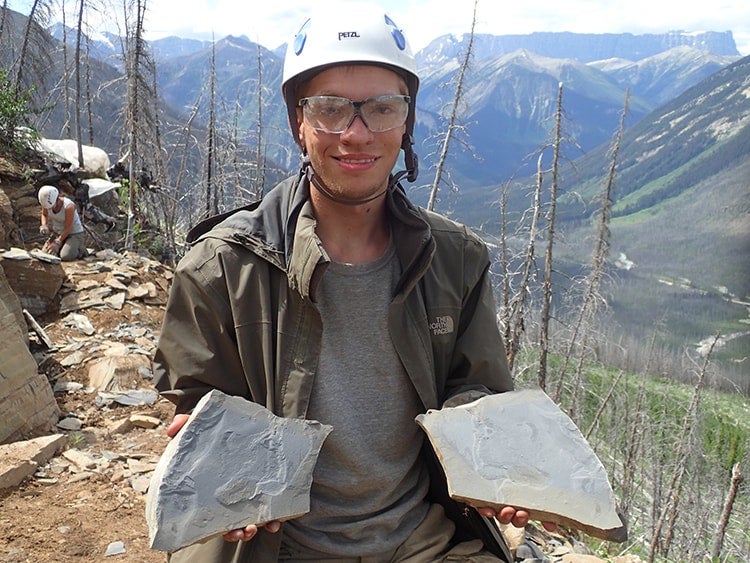U of T researchers and science illustrator bring fossilized creatures to life

Published: February 27, 2017
U of T researchers – some of whom are students – have uncovered fossils of creatures that roamed the earth or swam in its waters millions of years ago.
But it’s only with the help of science illustrators like Danielle Dufault at the Royal Ontario Museum that they are able to bring these long-extinct species back to life.
After many hours of research and consultation with experts, she depicts ancient creatures using traditional and digital media.
“Being able to work and collaborate with scientists gives you the opportunity to learn every day,” she told U of T News. “This is honestly my dream job.”
On Tuesday, Dufault will be speaking at the annual ROM Research Colloquium and Vaughan Lecture, about her work with researchers.
Read more about the event
U of T undergrad Joseph Moysiuk recently worked with Dufault to animate a marine creature known as a hyolith, which evolved more than 530 million years ago. The 20-year-old led a team of scientists to classify the mysterious cone-shaped creatures, showing that they were more closely related to brachiopods. The New York Times recently described the creature as a “tentacled ice cream cone with a lid.”
Although there is a rich fossil record of the hyolith, important diagnostic aspects of their soft-anatomy remained a mystery until now. And so drawing a brachiopod that existed even before the first dinosaurs was no simple task.
Dufault and Moysiuk started with what evidence they had, including fossils from the Burgess Shale in the Canadian Rocky Mountains and collections in the ROM.
“With fossils from the Burgess Shale, which are effectively compressed into flattened carbon films, the challenge is to figure out what the living animal would have looked like in three-dimensions,” Moysiuk said.

U of T undergrad Joseph Moysiuk showing matching halves of a fossil slab in Kootenay National Park (photo courtesy of Joseph Moysiuk)
Read more about the cone-shaped hyolith
Another difficulty is that fossilized remains are rarely complete, so researchers and illustrators must often fill in the blanks.
Over the years, Dufault has sat down and worked with many students and U of T researchers like Moysiuk cross-appointed to the ROM to create images for these ancient creatures. She asks researchers to go over the details of the creature's anatomy, asking questions like how many limbs did it have, how were they attached to the body, and how did the creature move.
Often, colour is a point of contention. Usually the scientists and illustrator will choose a colour based on the animal’s “ecological niche,” including where it falls in the food chain.
“Colour always serves some kind of function in nature,” Dufault explained.
To better understand a fossilized animal's environment, she will sometimes accompany researchers to a dig as she did in South Dakota for the excavation of a triceratops. She shares some of those adventures via Twitter.
Read about Moysiuk in The New York Times
Moysiuk said the process can help researchers refine their hypotheses.
“If something doesn’t make sense in the reconstruction, you have a chance to go back and look at the fossils to see why,” he said.
“For our project, it was particularly difficult to determine how the helens (curving spines) would have been positioned relative to the body in the living hyolith.”
U of T Associate Professor Jean-Bernard Caron and researcher Cédric Aria, who recently completed a PhD in U of T's department of ecology and evolutionary biology, have worked with Dufault to illustrate a new species, Ovatiovermis cribratus, a 500-million-year-old worm-like creature said to be no longer than a thumb.
Aria said he had also worked with Dufault to animate a fossil called Yawunik, a lobster-like, Cambrian-age predator which is an ancestor of butterflies and spiders.
The pictures, which end up in studies, textbooks and museums, help communicate research findings to a wide audience, Aria said. In fact, the depictions are partly what drew him to the field.
“If I am a paleontologist today, it is because some reconstructions of prehistoric animals have managed to capture both the novelty and the reality of extinct life,” he said.



